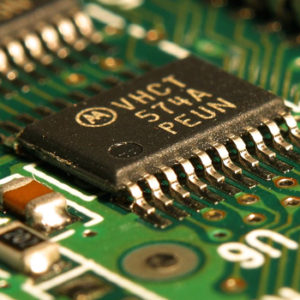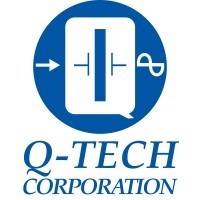Computerized Simulation Tools Are Used

- Home
- /
- POSTS
- /
- Components
- /
- Computerized Simulation Tools Are...
An integrated circuit or monolithic integrated circuit (also referred to as an ic, a chip, or a microchip) is a set of electronic circuits on one small flat piece (or “Chip”) of semiconductor material, normally silicon.
The integration of large numbers of tiny transistors into a small chip resulted in circuits that are orders of magnitude smaller, cheaper, and faster than those constructed of discrete electronic components.
These ics are designed using logic gates-that work with binary input and output (0 or 1). These are mostly used as decision makers. Based on the logic or truth table of the logic gates, all the logic gates connected in the ic give an output based on the circuit connected inside the ic- such that this output is used for performing a specific intended task. A few logic ics are shown above.
All these can be treated as generations of integrated technology. Ics are also classified based on the fabrication process and packing technology. There are numerous types of ics among which, an ic will function as timer, counter, register, amplifier, oscillator, logic gate, adder, microprocessor, and so on.
 The conventional integrated circuits are reduced in practical usage, because of the invention of the nano-electronics and the miniaturization of ics being continued by this nano-electronics technology. However, the conventional ics are notyet replaced by nano-electronics but the usage of the conventional ics is getting diminished partially.
The conventional integrated circuits are reduced in practical usage, because of the invention of the nano-electronics and the miniaturization of ics being continued by this nano-electronics technology. However, the conventional ics are notyet replaced by nano-electronics but the usage of the conventional ics is getting diminished partially.
For improving this article technically, please post your queries, ideas and suggestions as your comments in the below section.
The ic’s mass production capability, reliability and building-block approach to circuit design ensured the rapid adoption of standardized ics in place of designs using discrete transistors. Ics are now used in virtually all electronic equipment and have revolutionized the world of electronics. Computers, mobile phones, and other digital home appliances are now inextricable parts of the structure of modern societies, made possible by the small size and low cost of ics.
Ics were made possible by experimental discoveries showing that semiconductor devices could perform the functions of vacuum tubes, and by mid-20th-century technology advancements in semiconductor device fabrication. Since their origins in the 1960s, the size, speed, and capacity of chips have progressed enormously, driven by technical advances that allow more and more transistors on chips of the same size – a modern chip may have several billion transistors in an area the size of a human fingernail.
Ics have two main advantages over discrete circuits: cost and performance. Cost is low because the chips, with all their components, are printed as a unit by photolithography rather than being constructed one transistor at a time. Furthermore, packaged ics use much less material than discrete circuits. Performance is high because the ic’s components switch quickly and consume little power (compared to their discrete counterparts) because of their small size and close proximity. The main disadvantage of ics is the high cost to design them and fabricate the required photomasks. This high initial cost means ics are only practical when high production volumes are anticipated.
An integrated circuit is a single, miniature circuit with many electronically connected components etched onto a small piece of silicon or some other semiconductive material. (a semiconductor is a nonmetallic material that can conduct an electric current, but does so rather poorly.) integrated circuits are more commonly known as microchips.
The components etched onto an microchip include transistors, capacitors, and resistors. A transistor is a device capable of amplifying and switching electrical signals. A capacitor temporarily stores electrical charges, while a resistor controls current by providing resistance. The complete closed path through which an electric current travels is called a circuit.
The invention of the transistor in 1948 eliminated the need for bulky vacuum tubes in computers, televisions, and other electronic devices. As other components were also reduced in size, engineers were able to design smaller and increasingly complex electronic circuits. However, the transistors and other parts of the circuit were made separately and then had to be wired together—a difficult task that became even more difficult as circuit components became tinier and more numerous. Circuit failures often occurred when the wire connections broke. The idea of manufacturing an electronic circuit with multiple transistors as a single, solid unit arose as a way to solve this problem.









